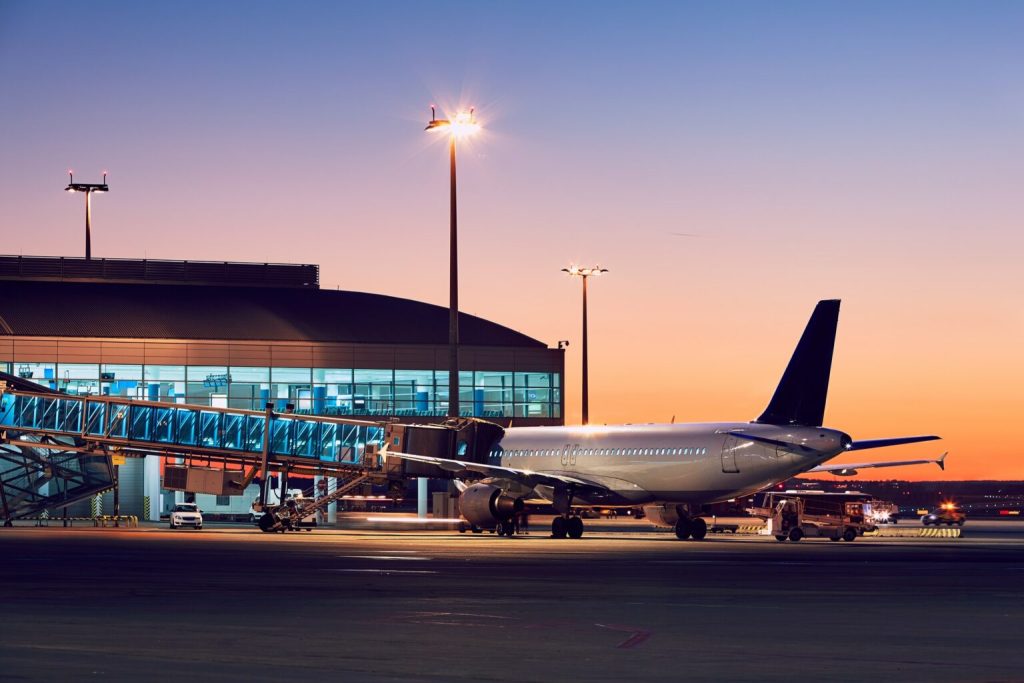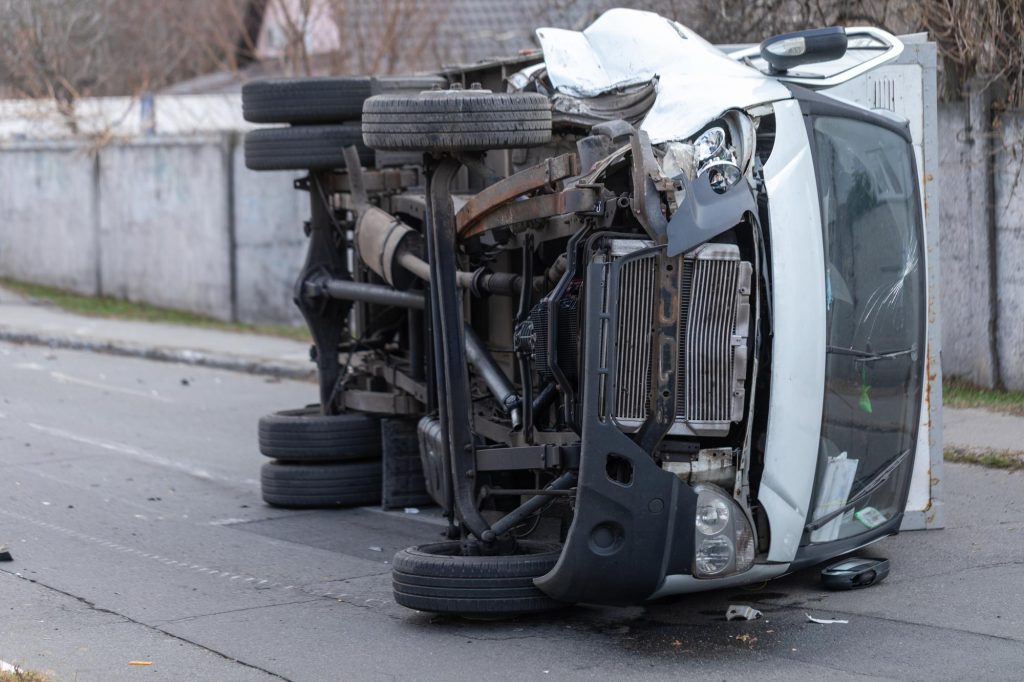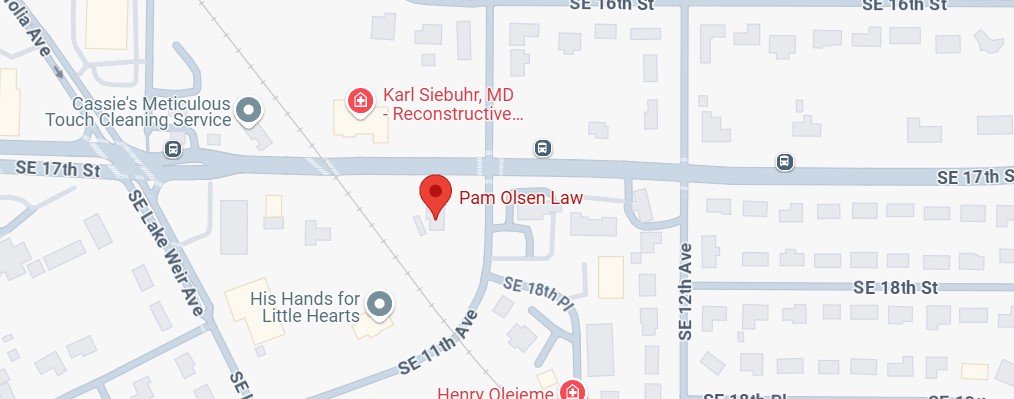Key Takeaways:
- Definition and Nature of Multi-Vehicle Pile-Ups: Multi-vehicle pile-ups are chain reaction collisions involving three or more vehicles, typically starting with an initial collision that triggers subsequent crashes as other vehicles cannot stop or avoid the accident site.
- Ocala’s High-Risk Location Ocala is particularly vulnerable to multi-vehicle accidents due to its position at the intersection of major highways, including I-75, which serves as a critical transportation corridor with heavy traffic and high-speed interstate travel.
- Primary Causes: The leading causes include heavy traffic on major routes, weather conditions (fog, rain, reduced visibility), distracted and impaired driving, and the physics of chain reaction collisions where one incident quickly escalates.
- Severe Injury Potential: Multi-vehicle crashes typically result in more severe injuries than single-vehicle accidents, ranging from whiplash and cuts to traumatic brain injuries, spinal cord injuries, and severe burns due to multiple impacts and higher speeds.
- Immediate Response Protocol: If involved in a pile-up: ensure personal safety, call 911 immediately, document the scene with photos and witness information, and seek medical attention even if injuries seem minor, as some symptoms may not appear immediately.
- Florida’s Comparative Negligence Rule: Florida follows a modified comparative negligence system where you can recover damages if you’re 50% or less at fault, with compensation reduced by your percentage of fault. If you’re more than 50% at fault, you cannot recover any damages.
- Complex Fault Determination: Determining fault in multi-vehicle accidents is challenging and often involves accident reconstruction experts, analysis of physical evidence, witness statements, and review of traffic camera footage. Fault may be distributed among several drivers.
- Insurance and Legal Complexities: Multi-vehicle accidents involve dealing with multiple insurance companies, complex liability disputes, potential coverage limit issues, and coordination of benefits from multiple policies, making legal representation often essential.
- Prevention Strategies:Key prevention measures include maintaining safe following distances (three-second rule), staying alert and focused, adjusting driving for weather conditions, reducing speed in poor visibility, and avoiding distracted or impaired driving.
- Time-Sensitive Legal Rights: Florida law provides four years to file a personal injury lawsuit, but insurance claims should be filed much sooner. Victims have rights to compensation for medical expenses, lost wages, pain and suffering, and other damages, but these rights must be exercised properly and within specific time limits.
Multi-vehicle pile-up accidents are among the most devastating and complex traffic incidents on our roads today. These crashes have become an increasingly serious concern for drivers, families, and emergency responders. Understanding the causes of these accidents, how to respond when they occur, and what legal options are available can significantly impact the protection of yourself and your loved ones.
In Ocala, multi-car pile-ups are particularly concerning due to our location at the intersection of major highways, including I-75, which serves as a critical transportation corridor connecting northern and southern Florida. The combination of heavy traffic, high-speed interstate travel, and Florida’s unique weather patterns creates conditions that make multi-vehicle crashes more likely and more severe.
What is a Multi-Vehicle Pile-Up Accident
A multi-vehicle pile-up accident, also known as a chain reaction collision, occurs when three or more vehicles are involved in a single crash event. These accidents typically begin with an initial collision between two vehicles, which then triggers a series of subsequent crashes as other vehicles are unable to stop or avoid the accident site. The result is often catastrophic, with multiple vehicle collisions creating a complex web of damaged cars, serious injuries, and challenging legal questions about fault and liability.
Common Causes of Multi-Vehicle Pile-Ups in Ocala
Understanding what leads to these devastating crashes is the first step in prevention. In our experience representing accident victims throughout Central Florida, we’ve seen several factors consistently contribute to multi-vehicle pile-ups.
Heavy Traffic on Major Routes
Ocala’s position along I-75 and other high-speed routes means we see substantial traffic volume daily. When vehicles are traveling at highway speeds with minimal following distance, even a minor incident can quickly escalate. The March 2025 I-75 crash near mile marker 351 exemplifies how quickly situations can deteriorate on busy interstate corridors.
Traffic congestion during peak hours creates stop-and-go conditions that are particularly dangerous. When traffic suddenly slows or stops, vehicles traveling at high speeds may not have adequate reaction time to avoid rear-end collisions that can trigger chain reaction accidents involving multiple vehicles.
Weather Conditions and Visibility Issues
Florida’s climate presents unique challenges for drivers. Morning fog, sudden thunderstorms, and smoke from wildfires can dramatically reduce visibility in seconds. These poor weather conditions make it nearly impossible for drivers to see hazards ahead until it’s too late to stop safely.
Heavy rain on hot pavement creates slippery road conditions that increase stopping distances significantly. When visibility is decreased due to fog or rain, drivers may not realize they need to slow down until they’re already in a dangerous situation.
Distracted and Impaired Driving
Distracted driving remains one of the leading causes of all auto accidents, including multi-vehicle pile-ups. When drivers are focused on their phones, navigation systems, or other distractions, they lose crucial seconds of reaction time needed to avoid crashes.
Impaired driving, whether from alcohol, drugs, or drowsiness, significantly increases the likelihood of causing a chain reaction accident. Impaired drivers have slower reaction times, poor judgment, and reduced ability to control their vehicles safely.
Chain Reaction Collisions
The physics of highway driving means that even minor incidents can quickly escalate. When one vehicle suddenly brakes or swerves, it creates a ripple effect. Other drivers may not have time to react appropriately, leading to multiple rear-end collisions or vehicles swerving into other lanes where they strike additional cars.
Multi Car Accident Injuries and Damages
The aftermath of a multi-vehicle collision can be overwhelming, both physically and emotionally. These crashes typically result in more severe injuries than single-vehicle accidents due to the multiple impacts and higher speeds involved.
Types of Injuries
Minor to Moderate Injuries:
- Whiplash and neck injuries
- Cuts and bruises
- Sprains and strains
- Minor concussions
Severe and Life-Threatening Injuries:
- Traumatic brain injuries
- Spinal cord injuries
- Internal organ damage
- Broken bones and fractures
- Severe burns
Head injuries are particularly common in multi-vehicle crashes due to the multiple impacts that can occur. Even if you feel fine immediately after the accident, it’s crucial to seek medical attention promptly, as some injuries may not show symptoms right away.
Property Damage and Environmental Hazards
Beyond personal injuries, multi-vehicle pile-ups often result in:
- Total vehicle loss for multiple cars
- Cargo spills from commercial vehicles
- Fuel leaks creating fire hazards
- Debris scattered across multiple lanes
- Environmental contamination requiring specialized cleanup
Immediate Steps to Take After a Pile-Up
If you’re involved in a multi-vehicle accident, your safety and that of others should be your immediate priority. Here’s what you should do:
Ensure Personal Safety
- Check yourself and passengers for injuries
- If your vehicle is drivable, move it to a safe location
- Turn on hazard lights
- Exit the vehicle carefully if it’s safe to do so
- Stay away from traffic lanes
Call for Help
Contact 911 immediately, even if injuries seem minor. Emergency responders need to secure the accident site and provide medical care. The police report will be crucial evidence for your insurance claims and any legal proceedings.
Document the Scene
If you’re physically able and it’s safe to do so:
- Take photos of all vehicles involved
- Capture the overall accident scene
- Get contact information from other drivers
- Collect witness statements
- Note weather and road conditions
- Record the time and location
Remember, in multi-vehicle crashes, it’s often impossible to determine fault immediately. Gather as much evidence as possible while being mindful of your safety and that of others.
Legal Considerations in Florida
Florida’s legal system has specific rules that apply to multi-vehicle accidents, and understanding these can significantly impact your ability to recover compensation.
Florida’s Pure Comparative Negligence Rule
Unlike some states, Florida follows a modified comparative negligence system. This means that you can still recover damages if you are partially at fault for the accident, but only if your fault is 50% or less. Your compensation will be reduced by your percentage of fault, but if you are found to be more than 50% at fault, you won’t be able to recover any damages.
For example, if you’re found to be 20% at fault for a multi-vehicle accident and your total damages are $100,000, you could still recover $80,000 in compensation. However, if you were 60% at fault, you would not be eligible to recover any damages.
Importance of Professional Investigation
Multi-vehicle accidents require thorough investigation to establish what happened and who bears responsibility. This often involves:
- Accident reconstruction experts
- Analysis of skid marks and vehicle damage
- Review of traffic camera footage
- Examination of electronic data recorders
- Witness interviews
The complexity of these cases means that crucial evidence can be lost or destroyed if not preserved quickly. That’s why it’s important to contact an experienced attorney as soon as possible after the accident.
How Fault Is Determined in Multi-Vehicle Accidents
Determining fault in a multi-car collision is one of the most challenging aspects of these cases. Unlike simple two-vehicle accidents, pile-ups involve multiple points of impact and potentially several contributing factors.
Role of Law Enforcement
Police officers will create an initial report, but their determination of fault is just the beginning. The report will document:
- Statements from all drivers involved
- Witness accounts
- Physical evidence at the scene
- Weather and road conditions
- Any traffic violations observed
Accident Reconstruction
In complex multi-vehicle crashes, accident reconstruction experts play a crucial role. These professionals use:
- Physics and engineering principles
- Computer modeling
- Analysis of vehicle damage patterns
- Examination of tire marks and debris
- Review of any available video footage
Establishing Fault Among Multiple Parties
In a typical multi-vehicle pile-up, fault may be distributed among several drivers. For example:
- The driver who initially caused the accident may bear primary responsibility
- A driver who was following too closely may share fault
- A distracted driver who failed to brake in time may also be partially responsible
Each driver’s insurance company will conduct its own investigation, often leading to disputes about who was responsible and to what degree.
Multi Car Crash Compensation and Insurance Issues
Dealing with multiple insurance companies after a pile-up can be incredibly complex and frustrating. Each insurer will try to minimize their client’s responsibility while maximizing the fault of others.
Types of Compensation Available
Economic Damages:
- Medical bills and ongoing treatment costs
- Lost wages and reduced earning capacity
- Property damage and vehicle replacement
- Rehabilitation and therapy expenses
Non-Economic Damages:
- Pain and suffering
- Emotional distress
- Loss of enjoyment of life
- Permanent disability or disfigurement
Insurance Claim Challenges
Multi-vehicle accidents present unique insurance challenges:
- Multiple PIP Claims: Each driver’s Personal Injury Protection coverage may come into play
- Liability Disputes: Insurance companies may spend months arguing about fault percentages
- Coverage Limits: With multiple vehicles involved, policy limits may be insufficient
- Coordination of Benefits: Multiple insurance policies may need to work together
When to Consult an Attorney
Given the complexity of multi-vehicle accidents, legal representation is often essential. An experienced Ocala injury attorney can:
- Investigate the accident thoroughly
- Deal with multiple insurance companies
- Protect your rights during the claims process
- Ensure you receive fair compensation
- Take your case to court if necessary
Notable Multi-Vehicle Pile-Ups in Ocala
Recent incidents in Marion County underscore the ongoing danger of multi-vehicle accidents on local roadways. In 2024, traffic fatalities have already surpassed 100, with many crashes involving multiple vehicles. For example, a multi-vehicle crash on Interstate 75 in late November resulted in one death and five injuries, causing significant traffic delays. Other fatal collisions, including head-on crashes and incidents involving commercial vehicles, have contributed to the rising toll. These statistics highlight the critical need for cautious and attentive driving in the area.
Recent High-Profile Incidents
The March 2025 I-75 multi-vehicle crash near mile marker 351 involved multiple vehicles and resulted in six people being transported to hospitals. This incident required coordinated response from multiple agencies and caused significant traffic disruptions.
Common Patterns
Analysis of local pile-ups reveals several concerning trends:
- Time of Day: Many occur during morning and evening rush hours
- Weather Related: Fog and rain significantly increase accident risk
- Location: Interstate highways see the highest frequency of serious pile-ups
- Speed Factor: Higher speeds result in more severe injuries and damages
Prevention Tips for Drivers in Ocala
While you can’t control other drivers’ actions, you can take steps to reduce your risk of being involved in a multi-vehicle accident.
Defensive Driving Strategies
Maintain Safe Following Distance:
- Use the three-second rule in good conditions
- Increase following distance in poor weather
- Watch for brake lights ahead of the vehicle directly in front of you
Stay Alert and Focused:
- Keep your phone out of reach while driving
- Take breaks on long trips
- Avoid driving when drowsy or under the influence
Adjust for Conditions:
- Reduce speed in rain, fog, or heavy traffic
- Use headlights in poor visibility conditions
- Be extra cautious in construction zones
Weather-Specific Precautions
Fog Conditions:
- Slow down significantly
- Use low-beam headlights
- Increase following distance
- Avoid passing other vehicles
- Pull over if visibility becomes too poor
Rain and Wet Roads:
- Reduce speed to account for increased stopping distance
- Avoid sudden movements
- Check tire tread regularly
- Keep windshield wipers in good condition
Auto Accidents: Know Your Rights
Understanding your legal rights after a multi-vehicle accident is crucial for protecting yourself and your family. Florida law provides several protections for accident victims, but these rights must be exercised properly and within specific time limits.
Time Limits for Claims
In Florida, you generally have four years from the date of the accident to file a personal injury lawsuit. However, insurance claims should be filed much sooner, and evidence can be lost if you wait too long to take action.
Your Right to Compensation
If you’ve been injured in a multi-vehicle pile-up due to someone else’s negligence, you have the right to seek compensation for all your damages. This includes not just your immediate medical bills and property damage, but also:
- Future medical expenses
- Lost income and reduced earning capacity
- Pain and suffering
- Emotional distress
- Impact on your quality of life
Dealing with Insurance Companies
Insurance companies, even your own, are businesses focused on their bottom line. They may try to:
- Minimize your injuries
- Rush you into a quick settlement
- Deny legitimate claims
- Shift blame to you or other drivers
Having experienced legal representation ensures that your rights are protected and that you receive the full compensation you deserve.
Conclusion
Multi-vehicle pile-up accidents are complex, dangerous events that can change lives in an instant. For drivers in Ocala, understanding the unique risks we face on our highways and knowing how to respond when accidents occur is essential.
The key takeaways for every driver should be:
- Prevention is always better than cure – drive defensively and adjust for conditions
- Know what to do if you’re involved – prioritize safety and document everything
- Understand your legal rights – don’t let insurance companies take advantage of you
- Get experienced help – these cases are too complex to handle alone
If you or a loved one has been injured in a multi-vehicle accident, remember that you don’t have to face this challenge alone. With over 34 years of experience handling complex accident cases, we’re here to guide you through this difficult time with compassion and expertise.
The road to recovery after a serious accident can be long and challenging, but with the right support and legal representation from an Ocala car accident lawyer, you can focus on healing while we handle the complexities of your case. Remember, you deserve not just compensation, but also peace of mind knowing that your case is in capable hands.
Contact us today for a free consultation. We’re available 24 hours a day, seven days a week, because we understand that accidents don’t happen on a schedule. Let us help you navigate this difficult time and fight for the justice and compensation you deserve. You can love your lawyer and love your results.
FAQS
What is a multi-car pile-up?
A multi-car pile-up is a crash involving more than one driver, where one car’s collision triggers others to hit multiple times in a chain reaction. Critical evidence like medical records helps determine fault and financial compensation.
How do you handle a situation where you are involved in a multi-vehicle accident?
In a multi-vehicle accident, ensure safety, call emergency services, and gather evidence like photos and driver information. Medical records and medical bills are key for financial compensation claims, but avoid admitting fault due to contributory negligence.
What is the leading cause of multi-vehicle pileups?
Bad weather causing decreased visibility is the leading cause of pile-up crashes. Drivers exceeding the speed limit or tailgating contribute, and events leading to the crash may involve more than one driver’s negligence.
Where do most multi-vehicle collisions occur?
Most pile-up crashes happen on highways with high speed limits or busy urban roads. Bad weather and decreased visibility increase risks, and critical evidence clarifies events leading to the crash for financial compensation.
 CALL US NOW
CALL US NOW




